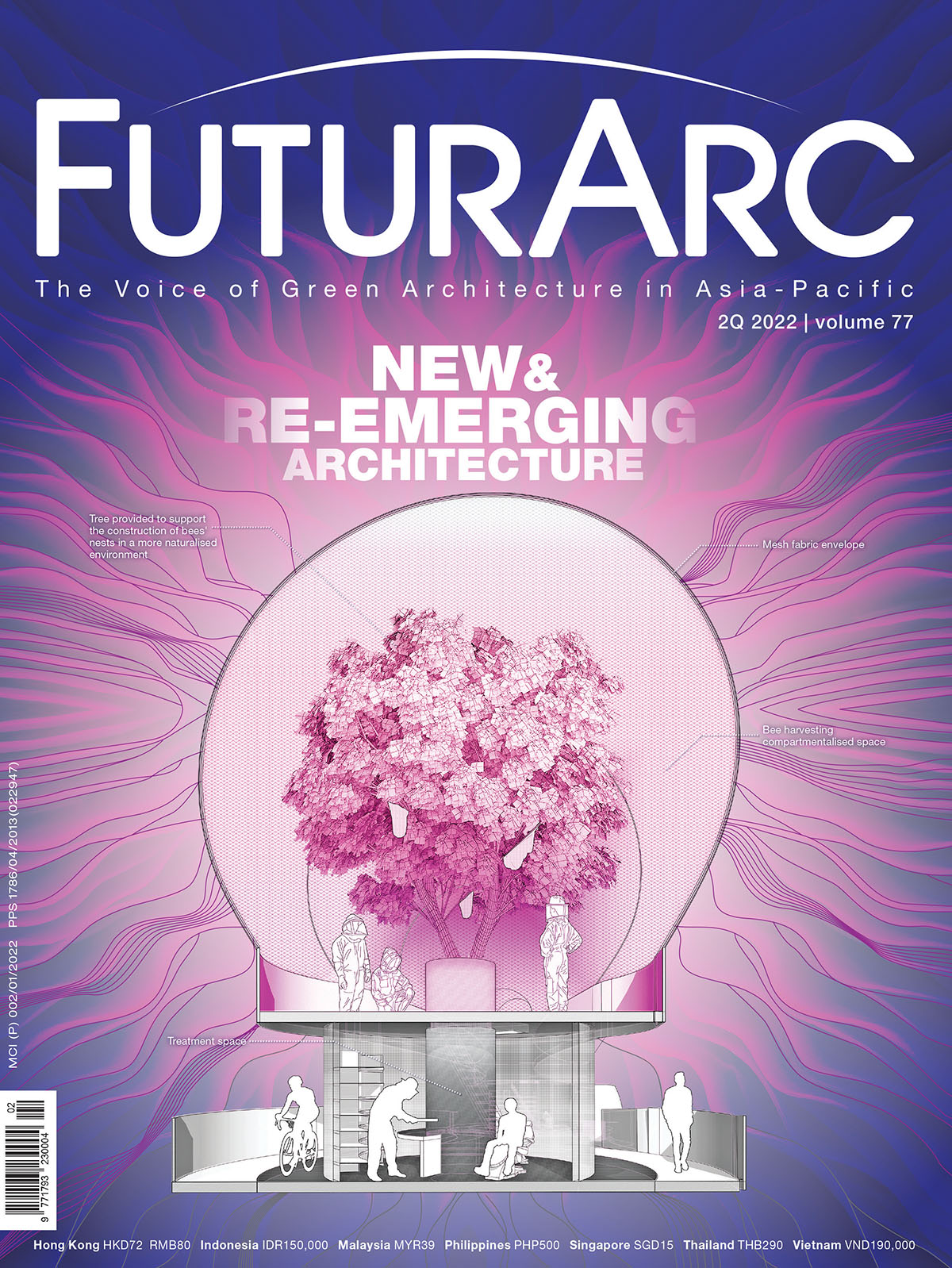New & Re-Emerging Architecture
Dear FuturArc readers,
Why do humans innovate?
Is it to address problems out of necessity or to address questions out of curiosity?
In architecture, innovation enabled by technology has brought about different forms and systems of design. On the building side, it has led to novel construction methods and ways of using existing materials more efficiently or in creating new ones.
It is common to equate this phenomenon with something brand new being made, as it is human nature to always want something new, hence setting the wheels of innovation in motion.
This sometimes results in technological products supplied in abundance on one side—at every touchpoint, a new product attending to niche concerns—and adoption or implementation playing catch up on the other, especially in developing markets.
“Technologically, the building industry is fragmented into isolated socio-technical pockets with little or no reciprocal connection between labour markets, material supply chains and design advice.” Milinda Pathiraja, co-founder of Robust Architecture Workshop, addresses the disconnection between the different parts and players of the industry, and asks us to imagine a more connected culture of building based on simple principles at each juncture of the process.
The advent of new architecture brings to the fore today’s era of parametric modelling, artificial intelligence, augmented/virtual reality interfacing with the realm of phygital landscapes, metaverse, NFTs and such. What are the present-day impacts and future implications, especially with respect to the environment? These were intensively discussed with experts in The FuturArc Interview and In Conversation.
The uncommon aspect of innovation encompasses reimagining or revisiting what already exists.
Thus, this issue also looks at the re-emergence of architectural solutions in India and Nepal, which were once ignored or forgotten and are now seeing a revival, especially among environmentally conscious communities.
And we discover how by lateral thinking we could tap into Nature’s bounty creatively without cleaving. For example, do you know the tropical sky can be a source of cooling, even to the extent of (almost) producing ice cubes without using a freezer box? How about incorporating bee or leech therapy into healthcare architecture?
Things once thought to be impossible are now materialising before our very eyes. Nonetheless, whether it is to solve problems or to satisfy curiosity, we should do well to remember that in all new or re-emerging creative efforts and trends, the best solutions are those that do not abuse or destroy Nature.
“If the bee disappeared off the face of the earth, man would only have four years left to live.” Maurice Maeterlinck, The Life of the Bee.
Table of Contents
1Q 2024: HEALTH/WELLNESS
Previous issues:
⠀
4Q 2023: YEAR-END ISSUE | WATER
⠀
3Q 2023: GREEN AWARDS | CROSS-GENERATIONAL ARCHITECTURE
⠀
2Q 2023: OLD IS GOLD
⠀
1Q 2023: MOBILITY & TRANSPORT
⠀
4Q 2022: YEAR-END ISSUE | POLICY VS PRACTICALITY, PRACTICE VS PRINCIPLES, PROGRESS VS PLANET
3Q 2022: GREEN AWARDS | REINTERPRETATION
2Q 2022: NEW & RE-EMERGING ARCHITECTURE
1Q 2022: HOUSING ASIA
To read the complete article, get your hardcopy at our online shop/newsstands/major bookstores; subscribe to FuturArc or download the FuturArc App to read the issues!



